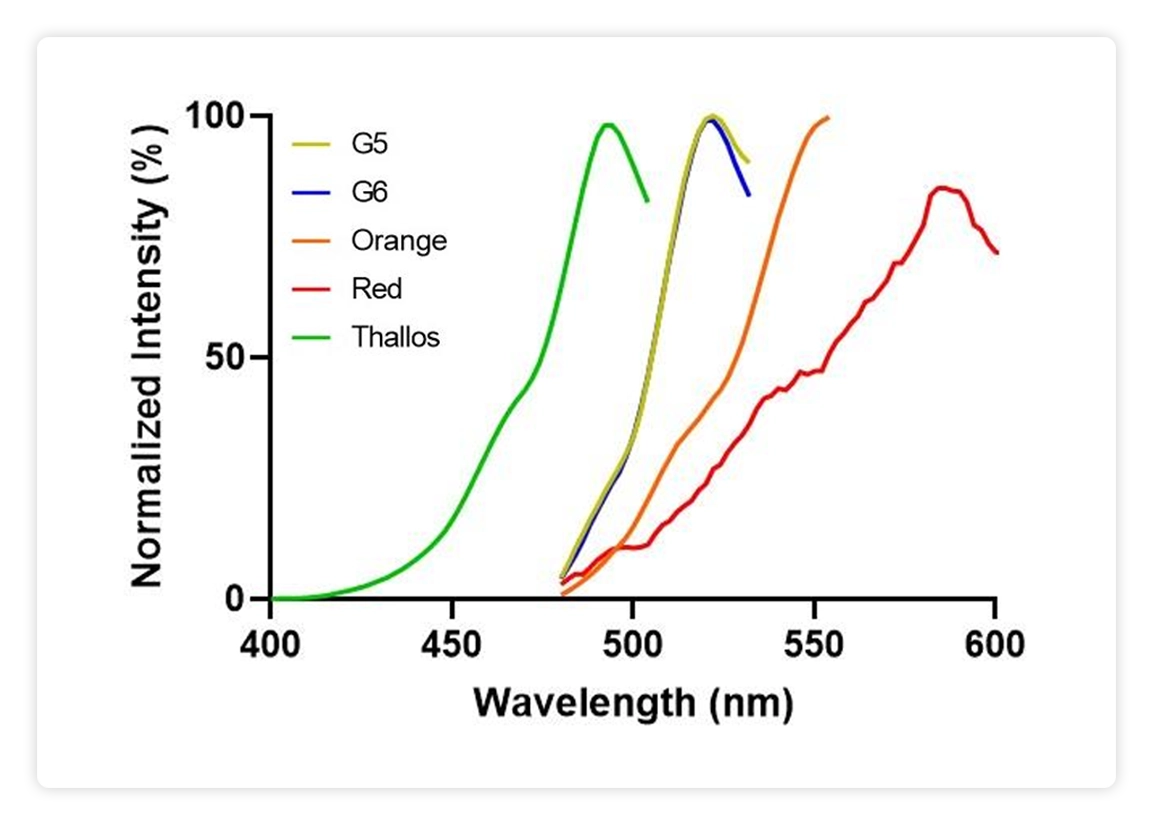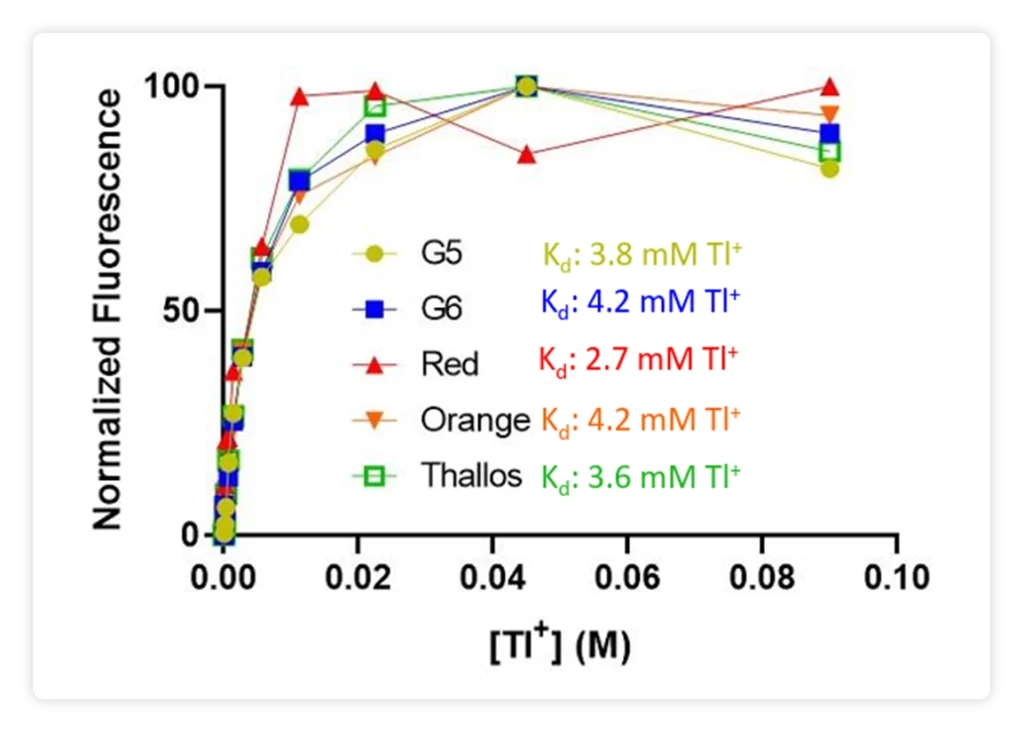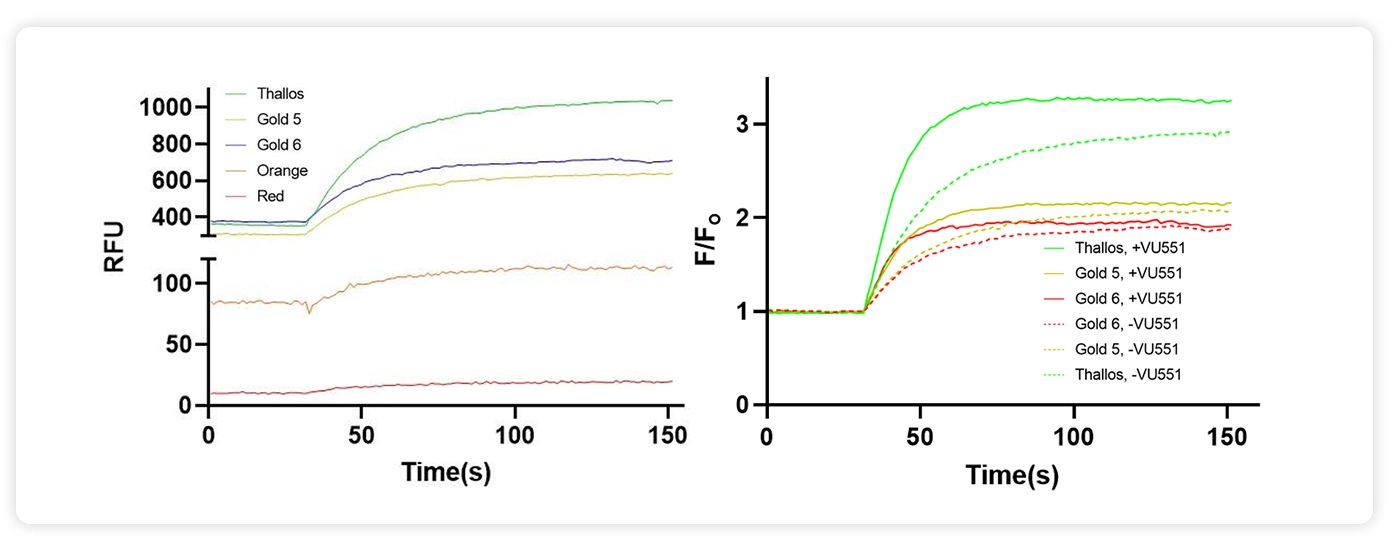Custom fluorescent indicators tailored to your project.
ION Biosciences continues to make remarkable advances in fluorescence-based technologies and we pride ourselves on the high-purity products we synthesize, so it should come as no surprise that we can synthesize custom fluorescent probes to suit your applications. Whether we ultimately choose to build off of a common fluorescent frame, or decide to synthesize a tailored solution from scratch – the team at ION can manage the workload from start to finish. From initial concepts and supporting research to characterized leads and complete data packages, ION delivers brilliant results.
The process of designing custom fluorescent probes begins with understanding our client’s needs. Reduced to its simplest concepts, custom fluorescent probes start with three general questions:
If you’re aiming to attach specific functional groups for labeling applications, browse our Conjugatable Ion Indicators page for more information on proprietary synthetic capabilities our team has developed that can support your goals.
We are continuously developing new fluorescent probes to enhance assay performance and robustness and can usually suggest multiple approaches to making the right ion indicator for you. When designing a custom fluorescent probe by building from a common scaffold, certain characteristics are maintained while others are ‘tunable.’ With considerations like sensitivity, ion selectivity and affinity, photostability, binding and release dynamics and pH sensitivity, one quickly realizes the potential complexity of investigating candidates suited to your application. ION’s chemists have experience with common dyes including rhodamine, fluorescein, and coumarin scaffolds, as well as our proprietary Asante Fluor, Janelia Fluor® and BODIPY dyes.

An example project where ION Biosciences designed and synthesized a collection of fluorescent ion indicators, is in our search for red-shifted thallium indicators. ION Biosciences’ R&D chemists researched, designed and developed numerous candidates of a ‘red-shifted’ version of Thallos AM, aiming to identify commercial candidates that would not interfere with GFP and could be used for multiplexing. By exchanging the fluorescent scaffold used for Thallos with other backbones, while maintaining the characteristic Thallium-chelator, various red-shifted thallium indicators were synthesized.

By leveraging our in house imaging equipment, ION’s chemists were able to shorten our development project cycle with immediate feedback from our biochemists on the performance of the various fluorescent probes in comparison with Thallos. In this instance it was imperative that our red-shifted dyes maintain monovalent, cationic binding characteristics similar to Thallos AM while remaining sensitive to modest increases in intracellular stimuli. However, the key to success would require maintaining a similar fluorescent response and binding affinity as Thallos. In the image at left, five red-shifted thallium indicators show comparable binding affinities to thallium in solution.
The red-shifted candidates were then loaded into CHO cells overexpressing GIRK channels for cell-based assay evaluation. At 30 seconds a stimulus solution of 1 mM Tl+ was added to the wells and data was recorded at ~ 1 Hz. As seen below at left, the candidates Gold-5 (G5) and Gold-6 (G6) both responded well to the thallium stimulus solution; however, the ‘Orange’ and ‘Red’ indicators did not elicit a marked response to thallium. This determination eliminated these candidates from further consideration. Gold-5 and Gold-6 were then tested in the presence of a potent activator of GIRK 1/2, VU551. As seen below at right, VU551 was added at 30 seconds after data acquisition, and while not as responsive as Thallos, both candidates exhibited a strong response to the increase in thallium flux, with Gold-5 exhibiting slightly better performance.

This project highlights ION’s ability to synthesize and successfully deliver fully characterized, custom fluorescent probes that are unique fits for your application.